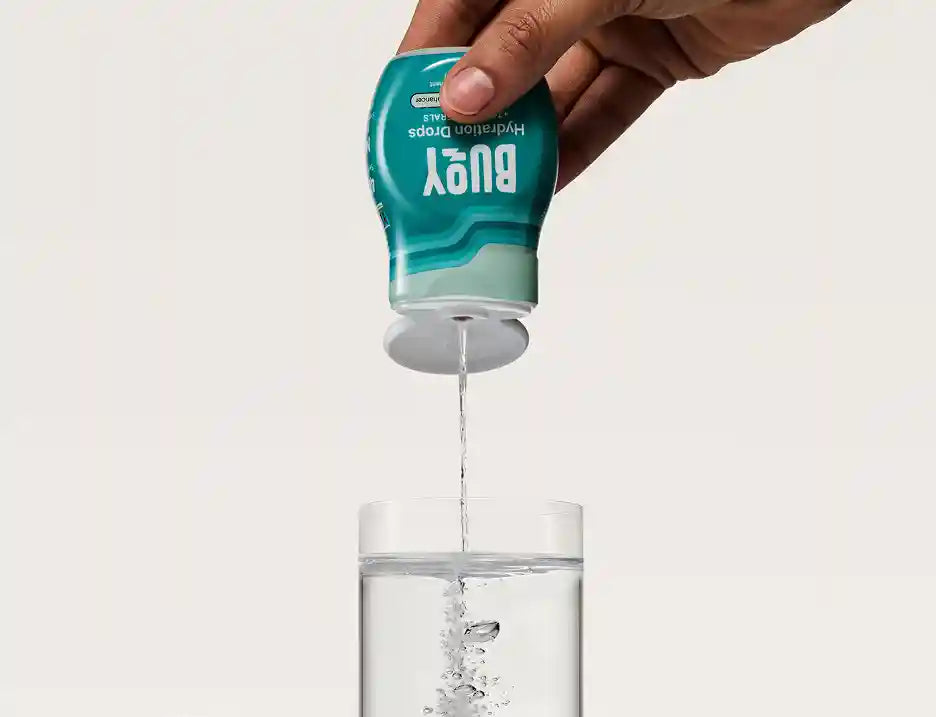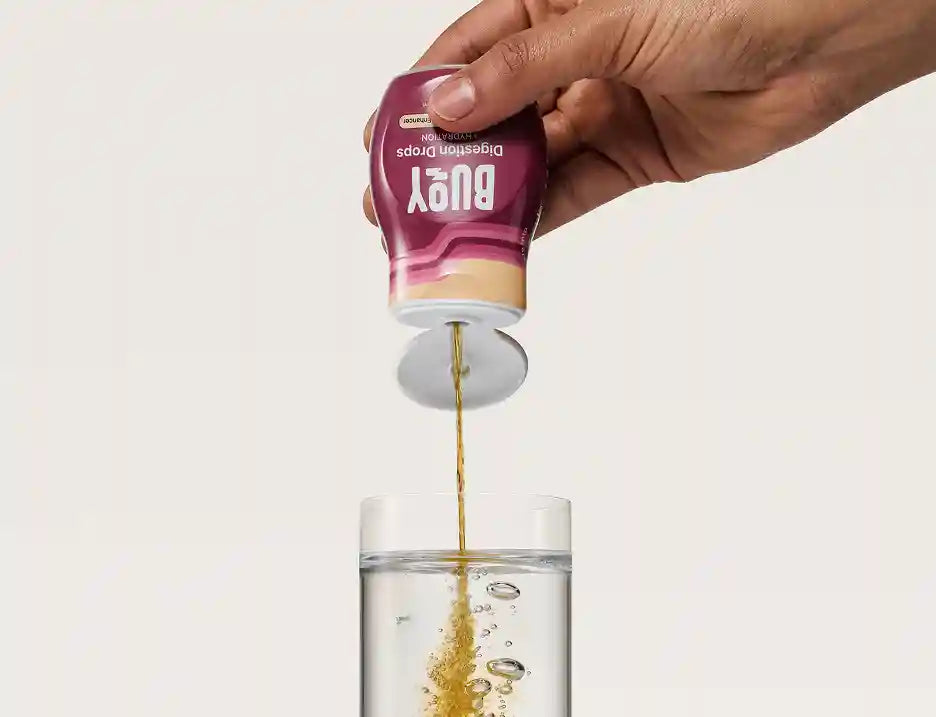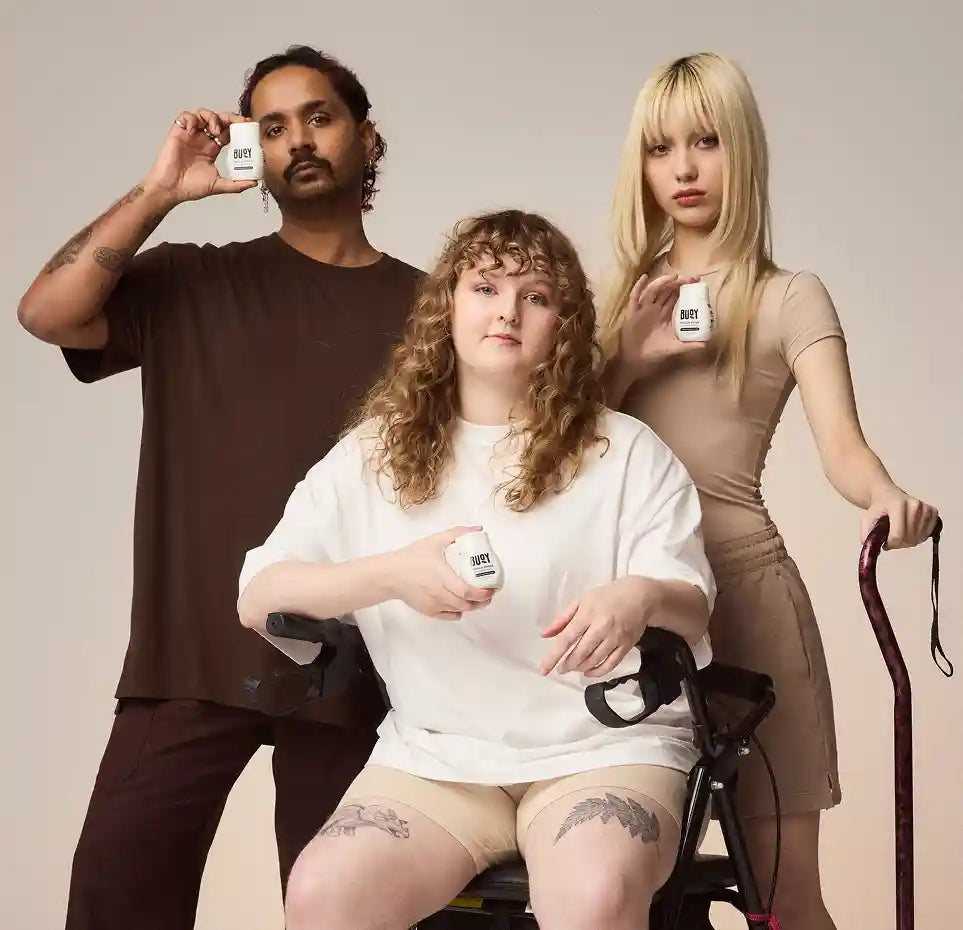
POTS and Heart Health: Strengthening Cardiovascular Resilience
Does it ever feel like your heart’s racing when all you did was standing up? For people living with Postural Orthostatic Tachycardia Syndrome (POTS), this can be a daily reality.
This condition affects blood flow and oxygen delivery, creating unique challenges for staying active and maintaining heart health.¹ While POTS can be tough on your cardiovascular system, there’s good news: with the right strategies, you can build heart strength and improve your quality of life.
Essential Takeaways:
- POTS Can Impact Heart Health: POTS affects heart rate, blood flow, and overall cardiovascular function, making it difficult for patients to stay active without triggering symptoms like dizziness, fatigue, or a racing heart.
- How to Improve Your POTS Heart Health: Safe, low-impact exercises, stress management techniques, and lifestyle adjustments like staying hydrated and increasing salt intake can help improve your cardiovascular resilience while keeping symptoms in check.
Let’s explore how POTS impacts your heart and discover practical, safe ways to support your cardiovascular resilience.
- How POTS Affects Heart Health
- Low-Impact Exercises to Support Cardiovascular Health
- The Role of Stress Management in Heart Health
- Lifestyle Changes for Cardiovascular Resilience
- When to Seek Professional Guidance
- Building Cardiovascular Strength with POTS
How POTS Affects Heart Health
POTS disrupts the way your cardiovascular system functions. When you stand, your body should naturally adjust blood flow to keep you steady and energized.
But with POTS, this process goes haywire. Blood pools in your lower body, reducing oxygen and nutrients to your brain and other vital organs. In response, your heart races to compensate, often leaving you dizzy, fatigued, and struggling to stay upright.
The Challenges of Staying Active with POTS
For many POTS patients, maintaining POTS heart health is an uphill battle. The fast heart rate (tachycardia) and low blood pressure (hypotension) episodes can make even light activity feel overwhelming.
However, improving your cardiovascular health POTS is not impossible—it just requires a thoughtful, tailored approach that prioritizes safety and gradual progress.² ³
Low-Impact Exercises to Support Cardiovascular Health
Exercise is a powerful tool for heart health, but with POTS, the traditional, “no pain, no gain” approach doesn’t work. Instead, focus on low-impact activities that allow you to move without triggering symptoms.
Recumbent Cycling
This seated, reclining position reduces blood pooling in your legs while giving your heart a gentle workout. Start with just a few minutes and gradually increase the duration as your endurance improves.
Swimming or Water Aerobics
The buoyancy of water supports your body, countering the effects of gravity and making it easier to move. Plus, it’s a great full-body workout.
Seated Yoga or Pilates
These activities focus on controlled movements and deep breathing, helping to improve circulation and strengthen your core.
POTS Exercise Tips
When starting any exercise routine, follow these pro tips to stay safe and get the most out of your workouts:
- Begin with short, manageable sessions and prioritize consistency over intensity.
- Rest as needed, and avoid pushing through fatigue or discomfort.
- Consider wearing compression garments like stockings to reduce blood pooling and support circulation during activity.
These small adjustments can help you safely build strength and endurance over time, empowering you to stay active without exacerbating symptoms.⁴ ⁵
Looking for more detailed guidance? Check out our guide to Low-Impact Exercises for POTS: Stretches, Yoga, and Gentle Workouts for additional POTS exercise tips, exercise instructions, and inspiration.

Recumbent biking is a low-impact exercise that helps improve circulation and build cardiovascular resilience, making it an excellent choice for managing heart health and POTS.
The Role of Stress Management in Heart Health
Stress doesn’t just take a toll on your mental well-being—it also directly impacts your heart health and POTS. For people with this condition, stress can worsen symptoms by increasing your heart rate and making it harder for your body to regulate blood pressure.
Here’s how to keep stress in check:
- Mindfulness Practices: Incorporate daily mindfulness exercises like deep breathing, progressive muscle relaxation, or meditation to calm your nervous system.
- Gentle Movement: Activities like tai chi or slow stretching can help reduce tension while improving circulation.
- Set Boundaries: Learning to say no to overly demanding tasks or situations can protect your energy and reduce unnecessary stress.³ ⁶
Reducing stress isn’t just about feeling more at ease—it’s a critical part of maintaining heart health and managing your POTS symptoms. Learn more about how to manage stress to protect your heart health in our guide to Managing Stress with POTS.
Lifestyle Changes for Cardiovascular Resilience
Beyond exercise and stress management, small lifestyle changes can make a big difference in supporting your cardiovascular health with POTS. Here are some simple changes you can add to your daily routine today:
-
Stay Hydrated: Drink plenty of water throughout the day, and add electrolytes to your beverages to support blood volume and circulation. Learn more about POTS and hydration with our Hydration Tips for POTS.
-
Increase Sodium Intake: For many with POTS, a higher salt intake helps stabilize blood pressure. Work with your doctor to determine the right amount for your needs.
-
Pace Your Activities: Break tasks into smaller steps and rest between them to conserve your energy.
- Recognize your Limits: Overexertion can lead to symptom flare-ups, so listen to your body and take breaks as needed.¹
These habits can help you create a strong foundation for cardiovascular health, even when managing the challenges of heart health and POTS. Discover more tips in our guide to Lifestyle and Diet Changes for Managing POTS.

Staying hydrated is essential for managing POTS symptoms. Give your drinks a boost with Buoy’s Rescue Drops for extra electrolytes and 6x the sodium of Hydration Drops to support blood volume and circulation.
When to Seek Professional Guidance
While lifestyle changes and self-care can go a long way, professional support is essential for personalized care. Here’s when to consult a healthcare provider:
- You’re unsure how to exercise safely or build a fitness routine.
- Your symptoms significantly interfere with daily life.
- You’re interested in exploring cardiac rehab programs designed for POTS patients.
Professional guidance can make all the difference in managing POTS effectively, offering personalized strategies to help you safely improve your heart health and quality of life.
What are Cardiac Rehab Programs for POTS?
Cardiac rehabilitation programs for POTS focus on gradually improving cardiovascular strength and overall fitness in a controlled, supervised environment. These programs are typically guided by healthcare professionals who understand POTS, such as physical therapists or cardiac specialists, and include:
- Low-impact exercise plans tailored to your needs and symptoms.
- Monitoring to ensure your heart rate and blood pressure remain within safe ranges.
- Education on managing symptoms and pacing daily activities.
Working with a POTS-aware physical therapist or cardiac specialist can help you develop a tailored plan to strengthen your heart without worsening symptoms.³ ⁷
Finding a Cardiac Rehab Program in Your Area
To find a program in your area, ask your POTS-aware healthcare provider for recommendations and referrals to local facilities with experience treating dysautonomia patients. They can help you connect with a program that understands the unique challenges of POTS and can provide appropriate care.
Building Cardiovascular Strength with POTS
Improving your POTS heart health requires patience, persistence, and compassion for yourself. Start small, focus on consistency, and remember that every positive step counts.
Reclaim Your Quality of Life
With the right strategies, you can build cardiovascular resilience and reclaim your quality of life. Above all, listen to your body and seek professional support when you need it. Together, these tools can empower you to thrive with POTS.
Discover More POTS Resources
Explore our POTS resource guides for expert tips and practical strategies to help you manage your symptoms and feel more like yourself again.

Support your POTS heart health with Buoy’s Rescue Drops and Rescue Salt—a clinically-studied, high-sodium electrolyte bundle made with pure minerals and no additives, sugars, sweeteners, or flavors.
References:
-
Cleveland Clinic. (2022). Postural Orthostatic Tachycardia Syndrome (POTS). Retrieved from https://my.clevelandclinic.org/health/diseases/16560-postural-orthostatic-tachycardia-syndrome-pots
-
Fu, Q., Vangundy, T. B., Galbreath, M. M., Shibata, S., Jain, M., Hastings, J. L., Bhella, P. S. & Levine, B. D. (2010). Cardiac Origins of the Postural Orthostatic Tachycardia Syndrome. Journal of the American College of Cardiology, 55(25), 2858–2868. Retrieved from https://pmc.ncbi.nlm.nih.gov/articles/PMC2914315/
-
Healthline. (2022). Postural Orthostatic Tachycardia Syndrome (POTS) and Your Heart: What You Need to Know. Retrieved from https://www.healthline.com/health/heart-failure/can-pots-cause-heart-failure
-
Fu, Q. & Levine, B. D. (2015). Exercise in the Postural Orthostatic Tachycardia Syndrome. Autonomic Neuroscience: Basic & Clinical, 188, 86–89. Retrieved from https://doi.org/10.1016/j.autneu.2014.11.008
-
Self. (2024). How to Safely Exercise With POTS, According to Experts. Retrieved from https://www.self.com/story/how-to-exercise-with-pots
-
Raj, V., Opie, M., & Arnold, A. C. (2018). Cognitive and Psychological Issues in Postural Tachycardia Syndrome. Autonomic Neuroscience: Basic & Clinical, 215, 46–55. Retrieved from https://www.ncbi.nlm.nih.gov/pmc/articles/PMC6160364/
- Mayo Clinic. (2024). Cardiac Rehabilitation. Retrieved from https://www.mayoclinic.org/tests-procedures/cardiac-rehabilitation/about/pac-20385192




